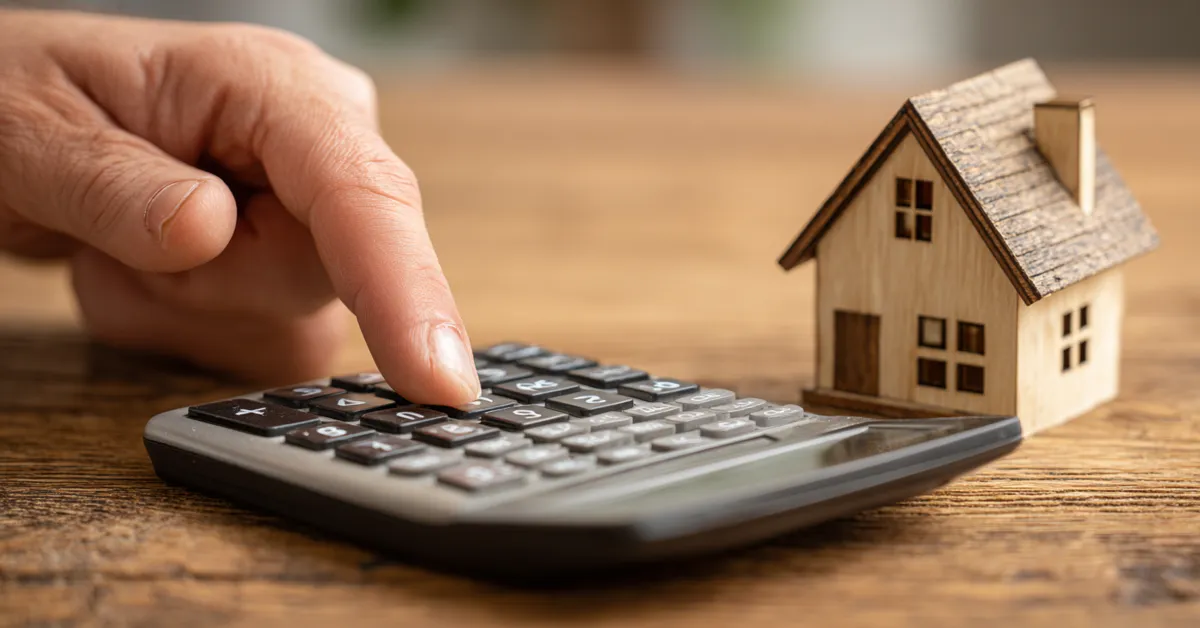Table of Contents
ToggleMortgage Affordability Calculator
Estimate the home price you can afford using income, debts, and down payment
Buying a home is one of the biggest financial decisions most people ever make, and understanding what you can realistically afford is essential. Mortgage Affordability Calculator tools help you estimate how much house you can buy by considering your income, expenses, loan terms, and lifestyle choices. With the right calculation, you can avoid overextending yourself and make a purchase that truly fits your budget.
What Is a Mortgage Affordability Calculator?
A Mortgage Affordability Calculator is an online financial tool designed to give you a clear picture of how much home you can comfortably afford. By entering information such as monthly income, existing debts, loan interest rate, and down payment, the calculator provides an estimate of your maximum home price and monthly mortgage payment.
You can try various financial tools on Your Calculator Hub to plan better, whether for mortgages, loans, or other everyday money decisions.
Why Mortgage Affordability Matters
Understanding affordability goes beyond just the price of the home. Property taxes, insurance, maintenance, and even unexpected costs can affect your financial stability. A Mortgage Affordability Calculator helps set realistic expectations by showing what portion of your income will go toward housing.
For example, financial experts such as those at Investopedia recommend that housing costs should not exceed 28–30% of your gross monthly income. This guideline ensures you still have room for savings, retirement, and daily living expenses.
How to Use a Mortgage Affordability Calculator
When using a Mortgage Affordability Calculator, you’ll need to provide:
Annual or Monthly Income – Salary, bonuses, and any other income sources.
Debts and Expenses – Credit card balances, car loans, or student loans.
Down Payment – The initial amount you can pay upfront.
Loan Term – Common terms are 15, 20, or 30 years.
Interest Rate – Based on current mortgage rates from your lender.
Once entered, the calculator estimates your maximum home price, monthly payments, and affordability range.
Factors That Influence Affordability
Income and Debt-to-Income Ratio
Lenders use your debt-to-income (DTI) ratio to measure your ability to manage monthly payments. A lower DTI means better affordability.
Credit Score and Interest Rates
Higher credit scores usually qualify you for lower interest rates, making homes more affordable over time. Use our loan and mortgage calculators to see how interest rates change your payments.
Down Payment
The size of your down payment directly reduces the loan amount and monthly obligation. A larger down payment can also help you avoid private mortgage insurance (PMI).
Loan Term
Shorter loan terms may mean higher monthly payments but lower total interest. Longer terms reduce monthly costs but increase interest over time.
Practical Example
Imagine you earn $6,000 per month, have $500 in existing debt, and want to buy a home with a 20% down payment. By entering these details into a Mortgage Affordability Calculator, you might find you can afford a property worth around $350,000 with monthly payments near $1,400, depending on interest rates.
This practical calculation gives you a starting point before speaking with lenders or house hunting.
Benefits of Using a Mortgage Affordability Calculator
Realistic Budgeting – Prevents overspending on a property.
Loan Comparison – Helps you compare 15-year vs. 30-year terms.
Financial Awareness – Shows how different down payments affect your affordability.
Confidence in Decisions – Gives clarity when approaching banks and agents.
You can explore related tools like the EMI Calculator or Retirement Savings Calculator to better plan your long-term finances.
Tips Before Using the Calculator
Check Your Credit Report – Knowing your credit score helps you enter accurate interest rates.
Estimate Property Taxes and Insurance – These vary by location and must be included in affordability.
Consider Lifestyle Choices – Future expenses like children’s education or retirement savings should influence your decision.
Recalculate Often – Rates and personal circumstances change; keep your estimates updated.
Internal Resources for Smarter Planning
Your Calculator Hub offers more than mortgage tools. For broader financial management, you can explore calculators like:
Compound Interest Calculator for long-term wealth growth
Debt Payoff Calculator to eliminate loans faster
Salary Tax Calculator to understand take-home pay
Currency Converter for international buyers
These resources complement the Mortgage Affordability Calculator and help you approach your purchase with full confidence.

Final Thoughts
The Mortgage Affordability Calculator is more than just a tool; it is a practical guide to aligning your dream home with your financial reality. By understanding your true affordability, you can step into the housing market with clarity and security. Remember, affordability is not about stretching your limits but about protecting your long-term stability.
Take time to test different scenarios, explore multiple financial calculators on Your Calculator Hub, and combine these insights with professional advice. That way, when you finally make the leap into homeownership, it will be a decision built on strong financial foundations.
